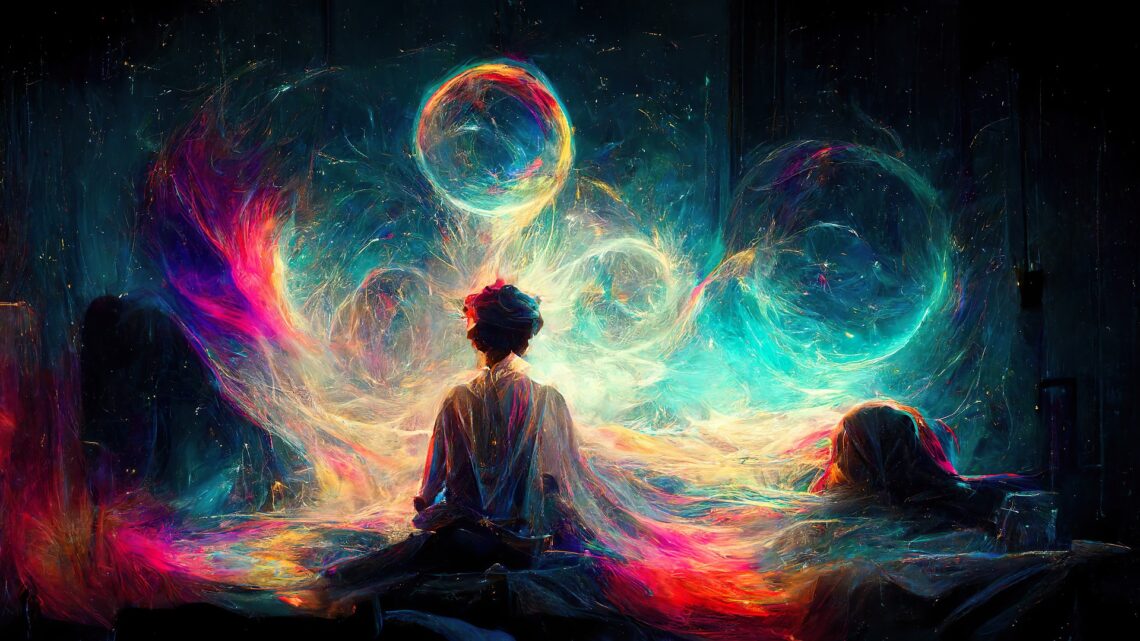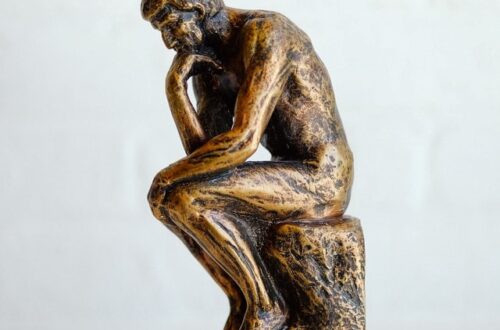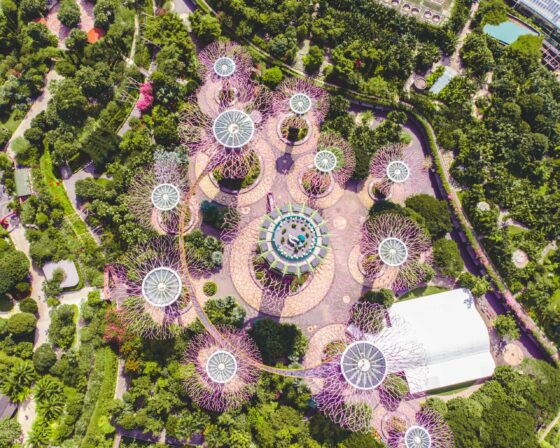
The Bardo of Dream
There are three bardos of life and three bardos of death. In previous articles I covered “Bardos in General” here , and the first of the six bardos: “The Bardo of this Life” here. The other two bardos of life are the Bardo of Dream and the Bardo of Meditation. In this article I will cover the Bardo of Dream.
Waking, Sleep and Dreaming
The Bardo of Dream covers the interval between sleeping and waking. The general pattern is to go from being awake, to being asleep, to having dreams before making our way back to being awake again.
Sometimes, in a dream when we wake up, we find we have only awoken into another dream. These are dreams within dreams. We realize this when we wake up from that second dream and find ourselves in our waking world again, assuming, this time, we are back in the “real” world.
But we can’t be sure. We don’t normally think, “I am awake” as we go about our waking life business. We take it for granted that we are. We make the same assumption in our dream state. Normally we take our nighttime dreams as real until we wake up. So, how do we know when we are truly awake in the “real” world?
Rinpoche claims,
“From the absolute, or enlightened, point of view, our experience of this life is definitely not the awakened state. It is a dream—a longer dream—that we call samsara. What we refer to as a dream is actually a ‘double illusion’ or a ‘double dream,’ and everyday waking life is the primary illusion.”
Rinpoche uses the teachings of Padmasambhava, one of the founding fathers of Tibetan Buddhism, for working with dreams in the Bardo of Dream.
Rinpoche says,
“These practices teach us how to recognize and transform our dream state into the experience of genuine wisdom.”
The Bardo of Dream is the time between the dissolving of the appearances of our present waking state, and their re-emergence in our next waking state.
Appearance-Emptiness
Rinpoche outlines three methods for working with The Bardo of Dream: the illusory body, dream yoga, and luminosity yoga.
To get the most out of these methods, we first have to understand the relationship between appearance and emptiness. We can’t really understand one without the other.
Conventionally, we think something either exists or it doesn’t. It can’t both exist and not exist at the same time. That would be logically impossible.
If it exists, it appears to us through one of our senses and if it doesn’t, there is an emptiness there. So, in ordinary thinking these two terms are “mutually exclusive”. You can have one or the other, but you can’t have both.
However, in Buddhism, appearance and emptiness are inseparable, and that’s why it is referred to as “appearance-emptiness”. You can’t have one without the other. This view is the basis of the Dream Yoga practices.
Relative and Absolute Truth
To comprehend this, we must look at appearances from the perspectives of relative truth and absolute truth. Relatively speaking, everything in our world exists. But in absolute terms, those same “existing” entities are not what they seem to be.
I can stand in front of a mirror and see my reflection. I exist. But if I look deeper into this, what is the “me” that exists? I see my body, but what is it made of? It’s made up of tissues, which are in turn made up of cells. These cells are made up of molecules which can be further reduced down to atoms, and then to protons, electrons and neutrons. The protons and neutrons can be subdivided into quarks which are in turn made of vibrating strings which end up being simply, energy and space.
It turns out, that what I think is myself is ultimately, emptiness. In other words, when i go looking for myself, I can’t find “me”. There is no there, there. I am the emptiness. That is what it means to say in relative terms, I exist, but in absolute terms, I am not what I appear to be.
The Buddhists call this “appearance-emptiness”. As Rinpoche says,
“All these forms we experience are like vividly appearing rainbows, transparent and unreal. They are like the reflection of the moon floating on the still surface of a pool of water.”
So on the relative level, we don’t question whether something is really there, but on the absolute level there is only emptiness.
In other words, we start out with a perceiving mind viewing a perceived object. But as we go deeper into the make-up of the perceiving mind and the perceived object, we see they both reduce down to emptiness, thus ending the separation between the two.
Rinpoche says,
“When we reach the final stage of finding “nothing at all,” then the perceiving consciousness is transformed. It is no longer a “perceiving” consciousness because the object of perception and the act of perceiving are discontinued. The true existence of the object is no longer there—what is there is transparent appearance, and an equally transparent awareness. Without solid existence, there is no way to delineate or define identity. Therefore, the separation between self and other, subject and object, becomes illusory.”
Entering the Dream State
Rinpoche maintains that when we fall asleep, our five-senses dissolve into a deep level of mind called the “all-base consciousness” or alaya-vijnana. As soon as our senses dissolve, there is a moment of going blank, like fainting. It’s also similar to a mini-death experience, so working with it is good practice for working with the experience of death.
As we fall asleep we enter into a dream state where another set of appearances arise based on our habitual tendencies in our waking life. If we don’t know we are sleeping, we relate to those appearances just as we would in our waking life. So, for ordinary people our dreams are just a continuation of the confusion of their waking state.
In other words, in our dreams we have five-senses experiences that trigger various thoughts and emotions just as they do in our waking life.
Waking Up In Our Dream
But this can all change if we “wake-up” in our dream. Then we recognize that the dream appearances are not real, realizing that the objects in our dreams have no solidity. We then see how they are “appearance-emptiness” and we are no longer deluded in our dream.
As Rinpoche says,
“We can say, ‘I know I am dreaming. I know these appearances are illusions.”
We realize these dream appearances are creations of the mind itself. They are mind, itself.
As said before, in the Bardo of Dream, the primary methods taught to understand the nature of mind and its appearances are the illusory body, dream yoga and luminosity yoga.
The Three Methods of Training
The first method is the “illusory body”. Here, we work with our waking appearances and practice reminding ourselves that, from the absolute viewpoint, they are all illusions, like in my nighttime dreams. It is important that we keep telling ourselves that at its deepest level, the world around us is “unreal”. This helps us to handle the continuing appearances, that are also not real, that manifest in the after death state.
The second method is “dream yoga”. Here, we work on “waking up” in our dreams so we can begin to manipulate them to enhance our spiritual journey. Rinpoche gives suggestions on how to wake up in our dreams, and then what to do once we have become aware we are dreaming.
The third method is “luminosity yoga” Here, we work with the states of deep sleep. It is at this level that we witness the great luminosity and the true nature of mind.
Rinpoche says on this,
“When we purify the ignorance of deep sleep, when we transcend that delusion and further penetrate the intense clarity, then we experience the clear, luminous nature of mind.”
He goes on to give practices on how to work with the “luminous nature of mind”.
This is so much detail here, it is only possible to give a very brief overview. If you are interested in pursuing this further, I suggest you get the book, Mind Beyond Death by Dzogchen Ponlop and review the various practices to see which ones resonate with you.
Next time, the Bardo of Meditation.
To learn more about the magic of the universe: Click this link: The Magical Universe.
Image by Facusio Creations from Pixabay




